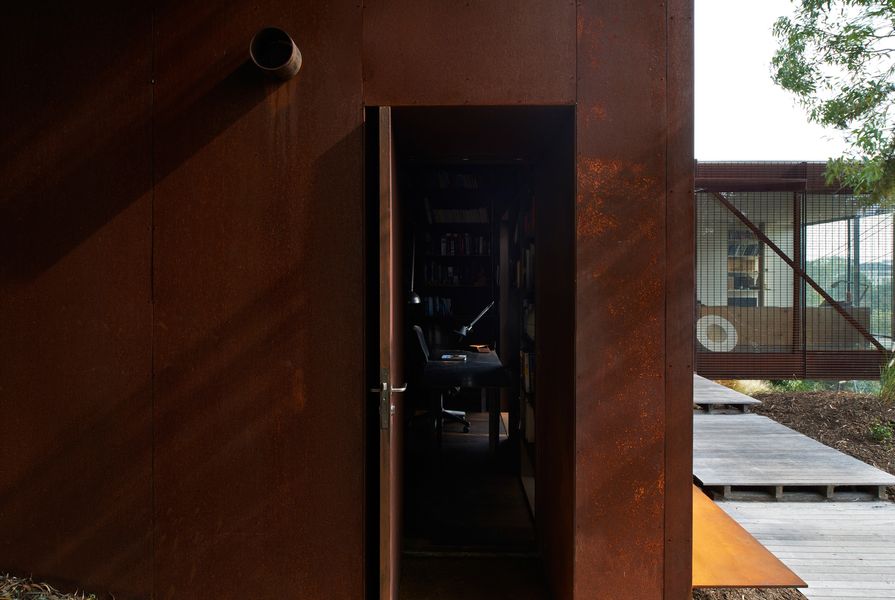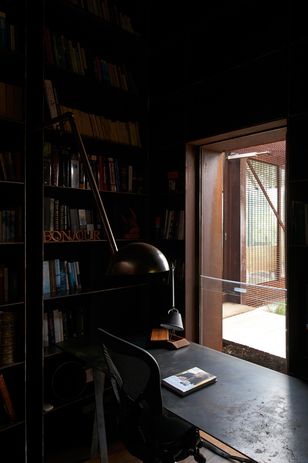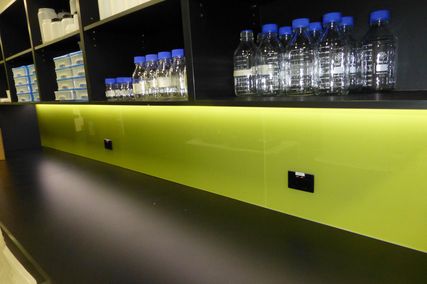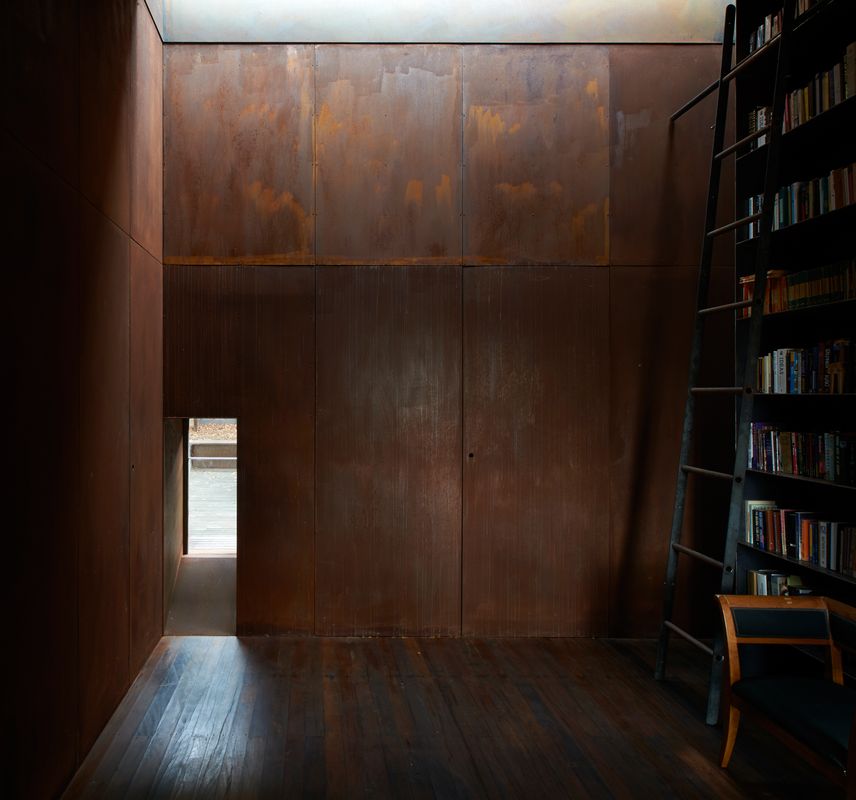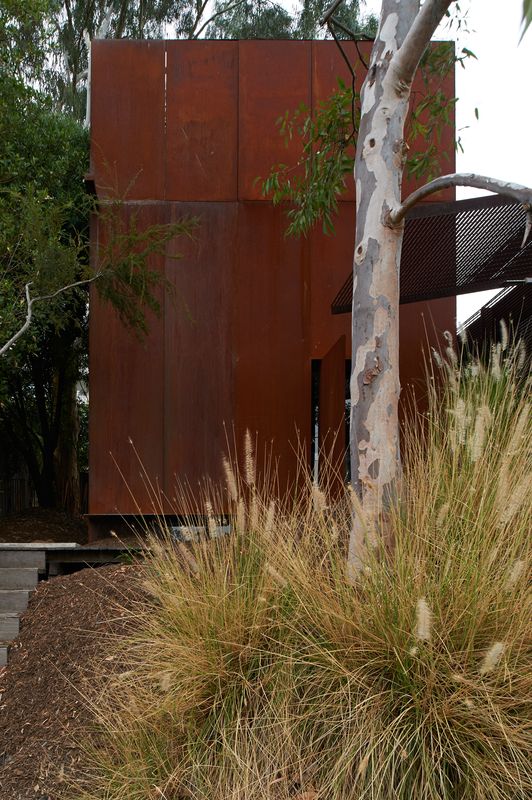In 1966, at the age of five, I first declared my intention to pursue a career in architecture. I remember my prep teacher, Miss Naughton, complimenting me on how well I formed the letters in the word “Architect.” My lettering has been pretty good ever since.
I started my own small practice in 1968, when my sister Fiona commissioned me to design a tree house at our home in Beaumaris. The tree of choice – a huge old cypress – was actually growing on an adjoining property and hanging over our side fence. Nowadays, you would need a planning permit and most likely end up at VCAT. But these were simpler times and I proceeded to prepare working drawings. Numerous notes on the drawings referring to Fiona’s particular needs indicate that my sister was a very demanding client .
Construction soon commenced. I was also the builder. Materials were easy to come by – I’d tag along with Dad (also an architect) on his site visits. When the builders learnt that I was also building, they’d put their hand into their nail bag and give me a fistful of nails. One day, I scored a long offcut of a Trimdek-like aluminium roof. I also had foot-deep Californian Redwood weatherboards. And I had rope. I framed up the walls in the school holidays, just before I turned eight. The rope was useful – everything was hoisted from the top rail of the paling fence underneath the tree.
Kew Studio by Sean Godsell Architects
Image: Earl Carter
Although there were minor defects at handover, the liability period went by without a hitch. There was an incident, however, right after I’d signed the Final Certificate. One day, Fiona was sitting on one of the branches used in the construction when it gave way. She fell to the ground in the sitting position, a look of outrage on her face. After much scrutiny of the working drawings, the matter was settled out of court for an undisclosed amount and we went on to enjoy our tree house for years to come.
In my third year as a student, I was tutored by Norman Day, who suggested that I should work at Edmond and Corrigan. The pay was pretty standard ($2.00 an hour) but, occasionally, Maggie would take everyone in the office out to lunch. Peter was fiery but I knew that person in my father, so it didn’t bother me. And he liked me because I’d played football for St Kilda. A lot of good students passed through that office – Michael Markham and Philip Goad, amongst others.
As a graduate, I worked for Anne Cunningham and Ann Keddie – “The Annes,” as they were known. They ran their busy office out of the front room in Anne Cunningham’s house in Prahran. One day, I listened as Ann Keddie completely dismantled a builder in the most eloquent way. He had it coming and she gave him both barrels, without raising her voice or swearing once. Fantastic! I also worked for Peter Sanders, who ran a small office in Richmond. A consummate practitioner who had worked in Le Corbusier’s office in India, Pete allowed me to document a housing project and to participate during contract administration so that I could sit my registration exams. These were all great offices and I remain fond of them to this day.
I travelled to Japan and Europe (my “Grand Tour”) in 1985 before working for Sir Denys Lasdun in London – large projects in a large office. On returning to Melbourne, I moonlighted through “the recession we had to have,” finally having enough work to start my own small office in 1994.
In small practice, you are always at the coalface. It is relentless. In 1980, after I’d been accepted into Melbourne University to study architecture, Dad had handed me a list of the 10 things that, in his opinion, were essential qualities to practising architecture. The first was “stamina.” He was right.
Source
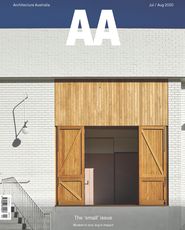
Discussion
Published online: 25 Jan 2021
Words:
Sean Godsell
Images:
Earl Carter
Issue
Architecture Australia, July 2020

